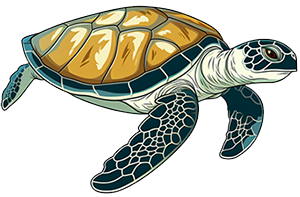Are your students fascinated by the idea of hermaphrodites? Every year when I talk about worms and other organisms that have both sperm and eggs, I get tons of questions about whether it is possible for humans to have that condition. Sex and gender determination are complicated topics, and I usually just answer with something brief so that my class doesn’t get too far off topic.
However, if you wanted to really get into detail about how sex is determined in humans and why it can be complicated, try this lecture case study: “Meiosis: SRY not SRY”
In this case, students are given a scenario based on a true story about a female athlete who was stripped of her medal when it was discovered that her cells contain a Y chromosome. As the case progresses, students learn the basics of how meiosis creates haploid cells that contain a unique set of genes.
This isn’t just a case about meiosis, students are presented with different ways that a person can have sex chromosomes that are not normal as they make a determination about why the athlete has a Y chromosome.
Download Worksheet (Questions about the Slides, Discussion, and Essay)
Link to Google Slides (download to own drive if you want to make changes)
Three hypotheses are explored:
- Klinefelter syndrome and nondisjunction (Could the Y have become attached to her X chromosome?)
- Translocation of the SRY gene during crossing-over
- Androgen Insensitivity Syndrome
Students can take notes on their own or follow the presentation using this worksheet. The worksheet gives a framework for the ideas and terms that students should know as well as essay questions to synthesize their overall understanding.
Discussions can get rather lively and the worksheet can provide a way for students to slow down and think about the concepts.
You may want to have students work in groups to answer the questions.
This lecture case was designed for AP Biology students, though it could be modified to work with beginning biology students. If you want to modify the lecture, go to the google slides and download a copy to your own drive
Link to Standards
Meiosis is a topic that is subject to considerable debate regarding how much of it needs to be taught an in what detail. If you teach basic biology, you are probably looking to the Next Generation Science Standards to guide lessons on meiosis, and AP Biology teachers are also using the college board guidelines. Both set of standards focus on the idea that haploid cells are created by meiosis and each are unique due to shuffling of the genes on those chromosomes (independent assortment and crossing-over.)
HS-LS3-2 Make and defend a claim based on evidence that inheritable genetic variations may result from: (1) new genetic combinations through meiosis, (2) viable errors occurring during replication, and/or (3) mutations caused by environmental factors.
(AP BIOLOGY) Enduring understanding 3.A: Heritable information provides for continuity of life.
3.A.1: DNA, and in some cases RNA, is the primary source of heritable information.
3.A.2: In eukaryotes, heritable information is passed to the next generation via processes that include the cell cycle and mitosis or meiosis plus fertilization.
3.A.3: The chromosomal basis of inheritance provides an understanding of the pattern of passage (transmission) of genes from parent to offspring
3.A.4: The inheritance pattern of many traits cannot be explained by simple Mendelian genetics.

